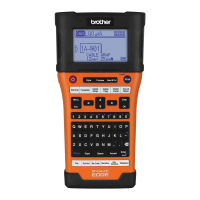
Do you have a question about the Brother P-Touch PT-E500 and is the answer not in the manual?
| Color | - |
|---|---|
| Print technology | Thermal transfer |
| Maximum resolution | 180 x 180 DPI |
| Maximum print height | 18 mm |
| Maximum printing width | 24 mm |
| Display | LCD |
| Product color | Black, Orange |
| Backlight display | Yes |
| Display number of lines | 3 lines |
| Display number of characters | 16 |
| Label type | 3.5 / 6/9/12/18/24 mm (Tz), 5.8 / 8.8 / 11.7 / 17.7 / 23.6 mm (HSe) |
| Number of frames | 7 |
| Ethernet LAN | No |
| USB 2.0 ports quantity | 1 |
| Connectivity technology | Wired |
| Maximum label length | 8 m |
| Tape type | TZe |
| Tape cutting | Automatic |
| Number of fonts | 14 |
| Number of styles | 10 |
| Built-in barcodes | CODABAR (NW-7), Code 128 (A/B/C), Code 39, EAN128, EAN13, EAN8, GS1-128, ITF-25, UPC-A, UPC-E |
| Battery type | Built-in battery |
| Mac operating systems supported | Mac OS X 10.5 Leopard |
| Cables included | USB |
| Harmonized System (HS) code | 84433210 |
| Depth | 250 mm |
|---|---|
| Width | 126 mm |
| Height | 94 mm |
| Weight | 920 g |
Guides users on inputting, modifying, and deleting text using the keyboard and editing functions.
Explains how to insert various symbols, including custom characters, using the symbol function and history.
Details the process of entering accented characters and special language-specific characters.
Describes how to adjust font, size, width, style, and alignment for text on labels.
Explains how to automatically adjust text size to fit within label length constraints.
Provides instructions on selecting and applying decorative frames to label designs.
Details various tape cutting options like Large Margin, Small Margin, Chain, and No Cut.
Explains how to preview the current label layout and check its appearance before printing.
Covers the process of printing a label once text entry and formatting are complete.
Details how to print a single page of a label design.
Guides on specifying a range of pages to print from a multi-page label document.
Explains how to print multiple copies of the same label, up to 99.
Provides instructions on trimming, peeling backing, and applying the printed label to surfaces.
Details how to save created labels into the device's file memory for quick recall.
Guides users on how to open previously saved label files from the device memory.
Explains the procedure for printing labels that have been previously stored in memory.
Provides steps for deleting stored label files from the device's memory.
Guides on using P-touch Editor for creating and designing label layouts on a computer.
Details the process for upgrading P-touch Editor to the latest available version.
Explains how to transfer templates and data between a computer and the P-touch labeling system.
Provides step-by-step instructions for transferring templates, databases, and images to the labeling system.
Describes how to retrieve and save templates or other data from the labeling system onto a computer.
Explains how to use transferred templates, databases, and images for printing labels.
Details the procedure for deleting transferred templates, databases, or user-defined characters.
Introduces P-touch Library for printing and managing templates and other data.
Utilizes keyboard shortcuts (Shift+Backspace or Shift+R) for full or custom setting resets.
Explains how to reset system settings, clear content, or perform a factory default using the menu.
Guides on cleaning the print head to resolve streaks or poor quality characters on printed labels.
Instructions for wiping dust and marks from the main unit using a soft, dry or slightly damp cloth.
Details how to clean the tape cutter blades to prevent tape jamming and ensure proper cutting.
Provides solutions for common issues like system unresponsiveness, blank displays, and printing errors.
Lists various error messages and their corresponding causes and remedies for quick resolution.
Presents detailed technical specifications for the main unit, including display, printing, and power.
Lists and categorizes various symbols that can be entered on the label maker.
Provides a comprehensive list of accented characters available for use in label creation.
Details character attributes such as font types, sizes, widths, styles, and line settings.
Illustrates the various frame designs available for enhancing label appearance.
Explains the settings and protocols for generating various types of bar codes.
Lists special characters usable with CODE39, CODABAR, and CODE128 bar code protocols.
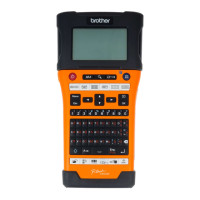
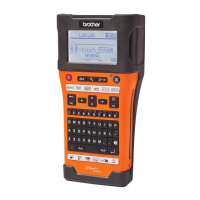



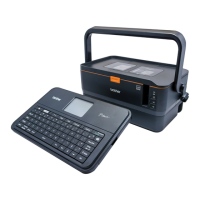
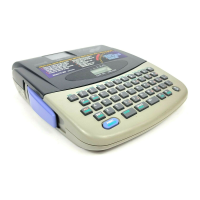

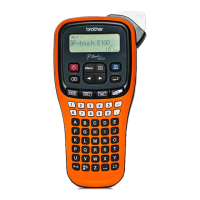

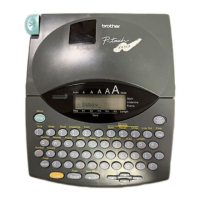

